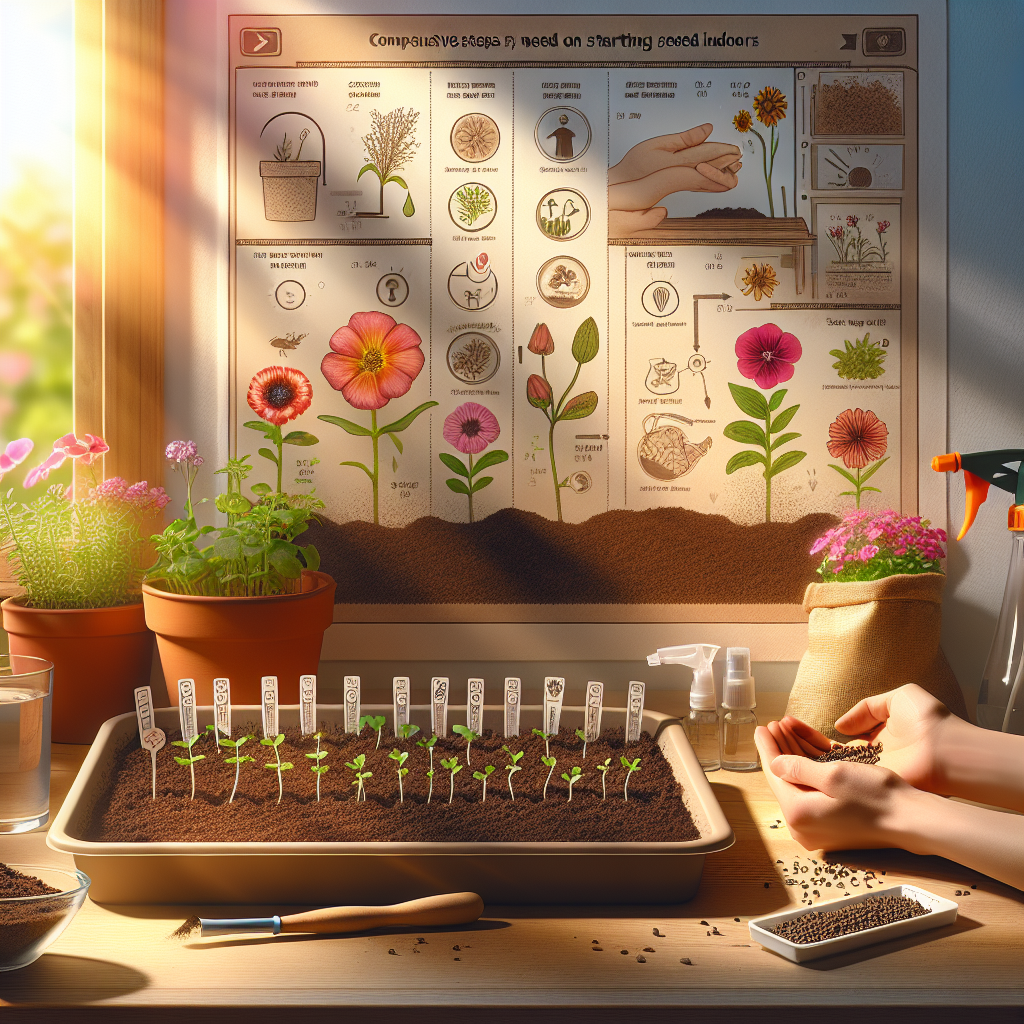
How to start flower seeds indoors
How to Start Flower Seeds Indoors: A Beginner's Guide
When the chill of winter begins to fade and the promise of spring starts to emerge, many gardening enthusiasts feel the urge to get their hands dirty. A great way to kick off the gardening season is by learning how to start flower seeds indoors. This technique not only allows you to get a head start on your garden, but it also gives you the opportunity to choose from a wider variety of flowers than what may be available in stores. In this guide, we'll take you through everything you need to know to successfully start your flower seeds indoors.
Understanding Seed Starting Basics
Before diving into the step-by-step process, it's important to comprehend a few key concepts about seed starting:
- Timing: Knowing when to start seeds indoors is crucial; different flowers have different germination times.
- Light: Seedlings require adequate light to grow strong and healthy.
- Temperature: Most flower seeds germinate best in warm environments.
By grasping these basics, you can better prepare for a successful seed-starting endeavor.
Choosing the Right Flowers
Not all flowers are suitable for indoor seed starting. Here's how to decide which varieties to choose:
- Review Germination Time: Some flowers take longer to mature than others. Select flowers that are appropriate for your region's planting schedule.
- Consider Growth Habit: Compact varieties are generally better suited for starting indoors as they will not outgrow their space.
- Check Seed Packets: Always read the instructions on the seed packets to ensure the flowers can be started indoors.
Popular flower choices that are perfect for starting indoors include:
- Petunias
- Pansies
- Marigolds
- Zinnias
- Sunflowers
Selecting Seed Starting Supplies
Setting up your indoor garden requires some essential supplies:
- Seed Trays: These come in different sizes and configurations, including individual cells or larger flats.
- Seed Starting Mix: A light and well-draining mix is critical for seed germination.
- Watering Tools: A spray bottle or gentle watering can will help distribute water without disturbing the seeds.
- Light Source: Grow lights or natural sunlight are essential for healthy seedling growth.
Preparing to Plant
Now that you have your supplies, it’s time to prepare for planting:
- Fill Your Seed Trays: Moisten the seed starting mix before filling your trays to ensure a good environment for germination.
- Plant the Seeds: Refer to the seed packet for planting depths. Generally, seeds should be sown 2-3 times their diameter deep.
- Water Gently: Use a spray bottle to moisten the soil lightly after planting.
Creating the Perfect Environment
Success in how to start flower seeds indoors hinges on providing the right environment:
- Temperature: Most seeds germinate best at temperatures between 65°F to 75°F (18°C to 24°C).
- Light: If using grow lights, maintain them 2-4 inches above the seedlings and provide around 14-16 hours of light per day.
- Humidity: Cover your seed trays with plastic lids or a clear plastic wrap on the surface to maintain humidity until the seeds germinate.
Watering and Care
After you plant the seeds, proper care is essential:
- Monitor Moisture: Ensure the soil remains consistently moist but not soggy.
- Removing Covers: Once seedlings emerge, remove any covers to avoid mold and promote air circulation.
- Feeding Seedlings: After a few weeks, you may need to start feeding them with a diluted fertilizer.
Transplanting Your Seedlings
When the danger of frost has passed and your seedlings have developed a few sets of true leaves, it's time to transplant them outdoors:
- Harden Off: Gradually acclimate your seedlings to outdoor conditions over a week to ten days.
- Choose the Right Location: Select a sunny spot with well-drained soil for planting.
- Spacing: Follow guidelines on the seed packet for proper spacing between plants.
Common Mistakes to Avoid
New gardeners often make mistakes that can be easily avoided:
- Overwatering: It's a common error; always check soil moisture before watering.
- Insufficient Light: Ensure that seedlings get enough light; otherwise, they may become leggy.
- Poor Seed Storage: Store seeds in a cool, dry place to maintain viability.
Conclusion
Starting flower seeds indoors is a rewarding journey that allows you to cultivate beautiful blooms in your garden. By following the tips and instructions outlined in this article, you can confidently embark on your seed-starting adventure. From selecting the right flower varieties to transplanting your seedlings outdoors, each step is crucial for success. Remember, as you grow and learn, every season will get better. Happy gardening!
By Guest, Published on August 23rd, 2024